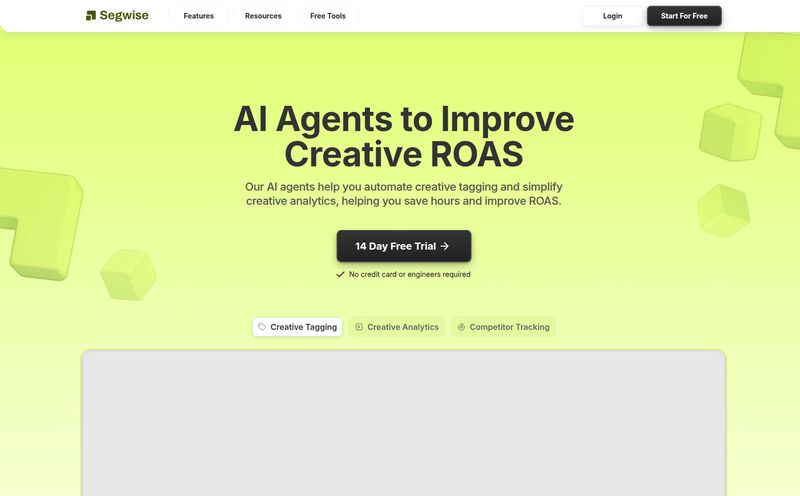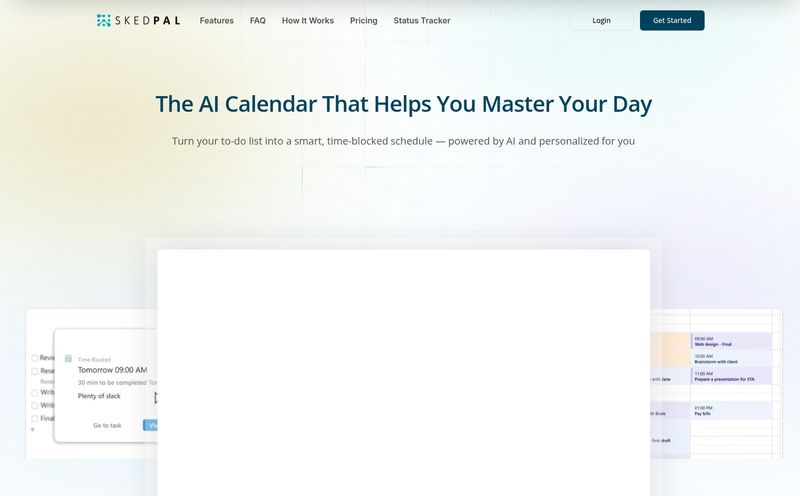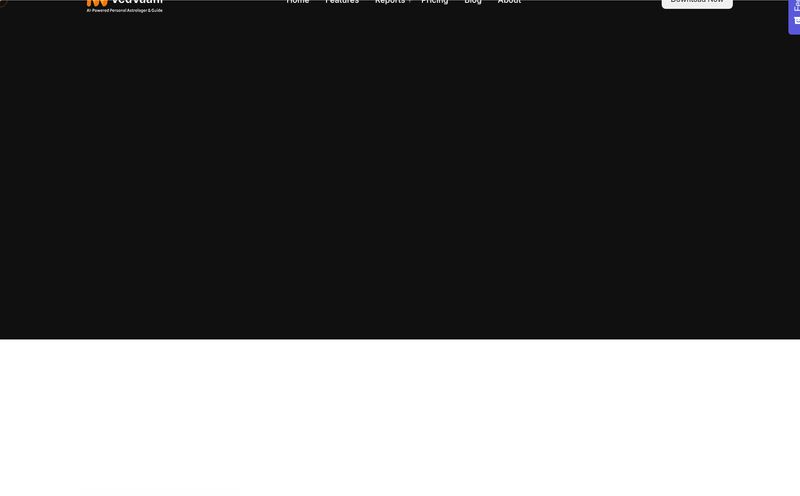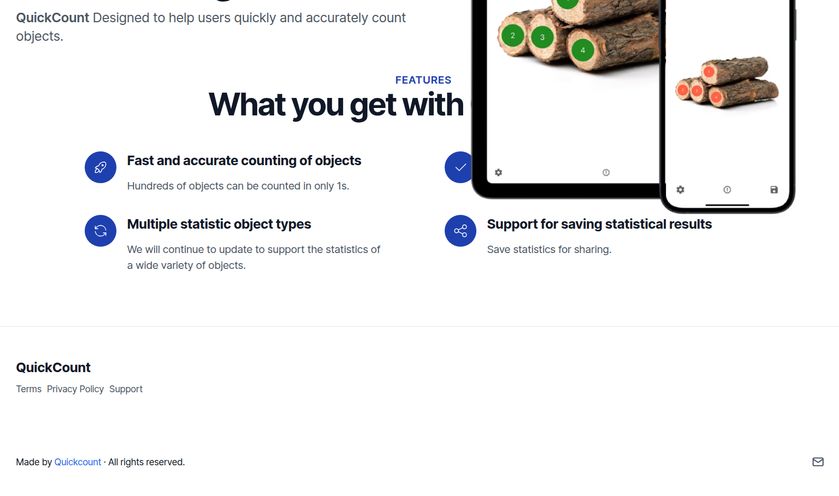Google Ads. For a small business owner, those two words can spark a mix of hope and sheer terror. It’s the promised land of targeted traffic, the place where customers are supposedly just waiting to find you. But it can also be a brutal, unforgiving money pit where your hard-earned budget vanishes faster than free donuts in the breakroom.
I’ve seen it a hundred times. A passionate entrepreneur, an expert in their craft, decides to 'give Google Ads a try'. They set up a campaign, throw some money at it, and… crickets. Or worse, a flood of irrelevant clicks that cost a fortune and lead to zero sales. It’s a frustrating cycle, and it often leads people to one of two conclusions: “Google Ads doesn't work,” or “I have to hire an expensive agency.”
But what if there was a third option? A middle ground between burning your budget and signing a four-figure monthly retainer. That’s the space a tool like Adbot is trying to fill. It's an AI-powered platform designed to automate the whole messy business of running online ads. But does it live up to the hype? As someone who’s spent years in the SEO and PPC trenches, I was skeptical. So, I took a look under the hood.
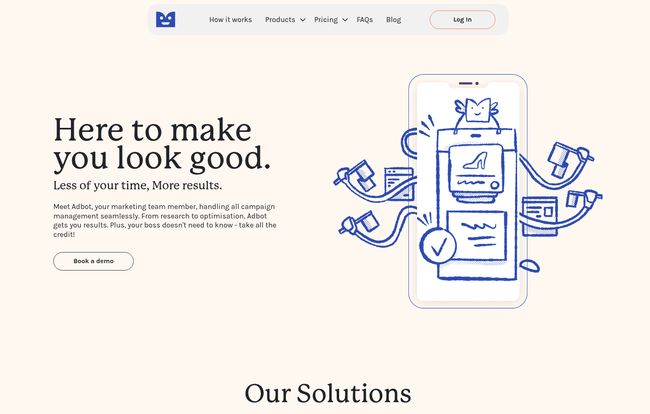
Visit Adbot
So What Exactly is Adbot?
Think of Adbot as an AI campaign manager that works for you 24/7. Instead of you manually tweaking bids, testing ad copy, and trying to figure out which keywords are draining your wallet, Adbot’s algorithms do the heavy lifting. The main idea is to take the guesswork and the constant, time-sucking management out of search advertising.
It hooks directly into your Google Ads and Bing Ads accounts. From one central dashboard, it promises to dynamically shift your budget to the best-performing platforms and keywords, always hunting for the cheapest, most effective clicks. It’s built on a foundation of machine learning, which means it’s supposed to get smarter over time, learning what works for your specific business. And frankly, any tool that also remembers Bing Ads exists gets a little nod of respect from me; it’s an often-overlooked source of quality traffic.
Who is Adbot Really Built For?
This isn't a tool for the giant corporations with massive in-house marketing teams. They’ve already got their complex systems and data scientists. Adbot is squarely aimed at the little guy. The underdog.
I'm talking about:
- Small Business Owners: The baker, the plumber, the consultant. The people who are the business and don’t have time to become a certified PPC expert.
- Solopreneurs and Freelancers: If you're wearing all the hats—CEO, marketing, sales, and customer service—automating your lead generation is less of a luxury and more of a survival tactic.
- Small E-commerce Shops: Competing with the Amazons of the world is tough. A tool that helps you find profitable niches without a huge agency fee can be a lifesaver.
- In-house Marketing Teams (of one): If you’re the sole marketer at a company, Adbot could act as your digital assistant, handling the day-to-day ad optimizations so you can focus on bigger picture strategy.
If you've ever stared at the Google Ads interface and felt a wave of anxiety, you're the person they had in mind when building this.
A Look at The Adbot Experience and Features
Okay, so it promises to make life easier. But how? Let's break down the core components.
Automated Search Ads on Google and Bing
This is the bread and butter of the platform. The 24/7 campaign management is the biggest selling point. While you're sleeping, or busy actually running your business, the AI is supposed to be working in the background. It’s adjusting bids, pausing underperforming ads, and pushing budget towards what’s actually converting. This is what separates it from a 'set it and forget it' campaign that you just let run wild. A static campaign gets stale; this one is designed to adapt. It's like having a junior PPC specialist who never sleeps or asks for a coffee break.
Going Beyond Search with Google Business Profile
Here’s a feature I genuinely liked. Adbot can sync with your Google Business Profile (GBP). This is so important for local businesses and something people often neglect. Keeping your GBP updated, responding to reviews… it all sends positive signals to Google. Integrating this into the same platform as your ads is just smart. It shows they understand that a successful online presence isn't just about ads, it's about the entire ecosystem. Big plus in my book.
The Social Media Elephant in the Room
The website proudly mentions Social Media Ads. And that's exciting! The idea of managing Google, Bing, and social campaigns from one dashboard is the holy grail for many small businesses. However, and this is a big ‘however’, the feature is currently on a waitlist. So, if you’re signing up today hoping to automate your Facebook or Instagram ads, you'll have to wait. It’s a bit of a bummer, but I appreciate that they're transparent about it rather than over-promising.
Let's Talk Money: Breaking Down Adbot's Pricing
Alright, the all-important question. What’s this going to cost me? The pricing structure is a little different, so pay attention. There are two separate costs you need to understand.
1. Your Ad Spend: This is the money that goes directly to Google or Bing. You set this budget yourself. Adbot suggests starting at R1500 (more on the 'R' in a moment). This is your money to pay for clicks.
2. The Platform Fee: This is what you pay Adbot for their service—for the AI, the dashboard, the automation. Think of it as the management fee.
They offer two tiers for the platform fee:
| Plan | Price (Platform Fee) | What You Get |
|---|---|---|
| Do It Yourself (DIY) | R600 per month | You get access to the AI tech. The bot handles the optimization, but you monitor the performance and make strategic decisions. Best for the hands-on type. |
| Done For You (DFY) | R2200 per month | This is the full-service package. Adbot's team of human experts handles everything from setup to reporting. You just sit back and (hopefully) watch the leads roll in. |
A huge plus right now is the R0 setup fee, which they say is normally R1500. Waiving setup fees is always a great incentive to jump on board.
Now, about that "R". All payments are processed in ZAR (South African Rand). If you're outside of South Africa, your bank will handle the currency conversion. It's a minor hurdle, but it's something to be aware of—it might mean the final charge on your card varies slightly month to month with exchange rates.
But Does It Actually Work? The Pros and Cons
This is where the rubber meets the road. A tool can have all the shiny features in the world, but if it doesn’t deliver results, who cares?
The Good Stuff
Based on their own case studies and the logic of the platform, there's a lot to like. The testimonials are pretty compelling, with one client claiming a 90% increase in online sales and another seeing an 8x lifetime customer revenue. Those are not small numbers.
The core advantage is efficiency. An AI can process data and make micro-adjustments far faster than any human can. This continuous optimization is where the real power lies. For the price of the DIY plan (around $30-35 USD at the time of writing), you're getting a level of automation that would have been unthinkable just a few years ago. Compared to a typical agency fee, which can easily run into the thousands per month before ad spend, it's incredibly affordable.
A Few Caveats to Consider
No tool is perfect, and it's my job to be a little critical. First, as mentioned, the Social Media Ads feature isn't ready yet. That's a potential drawback if you need an all-in-one solution right now. Second, the ZAR payment system could be a small point of friction for international customers. It’s not a deal-breaker, but it’s an extra step to think about.
Finally, you have to remember that you're putting a lot of faith in an algorithm. While AI is powerful, it doesn't understand the nuance of your business like you do. For the vast majority of small businesses, the trade-off in automation is well worth it. But if you have a highly complex, niche product, you might find you still need some human strategic oversight, which is where the more expensive DFY plan comes in.
My Final Take: Is Adbot Worth a Shot?
After looking it all over, my professional opinion is a solid, resounding yes… for the right person. If you are a large company with a dedicated PPC team, this isn't for you. But if you are a small business owner, a freelancer, or a small e-commerce shop currently doing one of three things:
- Avoiding paid ads entirely because they're too scary.
- Running ads manually and feeling like you're just guessing.
- Paying a fortune for an agency that you're not sure is delivering.
Then Adbot presents a seriously compelling alternative. It democratizes access to sophisticated ad management technology. The DIY plan, in particular, hits a sweet spot of affordability and power. It empowers you to compete without needing a degree in data science or a massive marketing budget.
Frequently Asked Questions About Adbot
- How does the billing work? Is it all one payment?
- No, and this is important. You pay two separate bills. Your Ad Spend budget is paid in advance directly into your Adbot wallet, and this money is only used when someone clicks your ad. The Platform Fee (for the DIY or DFY plan) is a separate monthly subscription charge for using Adbot's service.
- Is Adbot a good alternative to hiring a marketing agency?
- It can be, especially from a cost perspective. For the monthly price of Adbot's DFY plan, you'd be lucky to get a few hours of an agency's time. Adbot offers a tech-driven solution that can be more cost-effective for straightforward search campaigns. Agencies, however, can offer broader strategic advice, creative services, and more hands-on human management.
- Can I use Adbot if my business isn't in South Africa?
- Yes, you can. Your ads can be targeted to run in any country. The only thing to note is that the platform fee will be charged in South African Rand (ZAR), and your bank will handle the currency conversion.
- What happens to my money if I have ad spend left in my wallet?
- The money in your Adbot wallet is specifically for ad spend. Since it's only deducted when someone clicks your ad, any unused portion remains in your wallet for future campaigns. It's your money allocated for ads.
- How much control do I have with the DIY plan?
- With the DIY plan, you have control over the strategic aspects. You set the budget, define the overall goals, and monitor the results through the dashboard. The AI handles the micro-management—the bidding, keyword optimization, and performance adjustments—based on the parameters you've set.
- Is there a free trial available?
- The information provided doesn't specify a free trial, but they are currently offering a R0 setup fee, which waives the usual R1500 charge. This significantly lowers the barrier to entry to get started.
Conclusion
The world of CPC and traffic generation is no longer just a playground for big brands with deep pockets. Tools like Adbot are leveling the playing field. By harnessing AI, they take the most intimidating parts of running search ads—the constant monitoring and optimization—and automate them. While it’s not a magic wand (you still need a good product and a solid website), it's a powerful ally. For the small business owner who just wants to get back to doing what they love, Adbot could be the key to unlocking consistent, predictable growth without the headache. And in this economy, that's worth its weight in gold.
Reference and Sources
- Adbot Official Website: https://myadbot.com
- Adbot Pricing Page: https://myadbot.com/pricing
